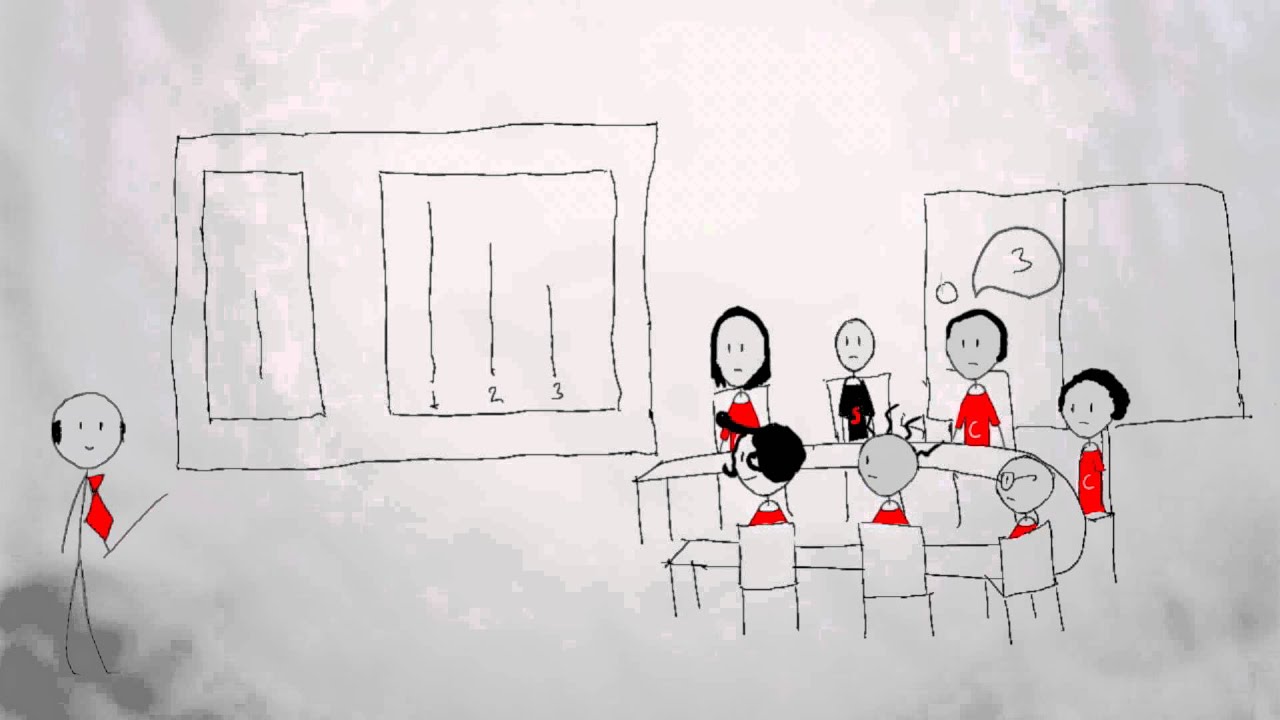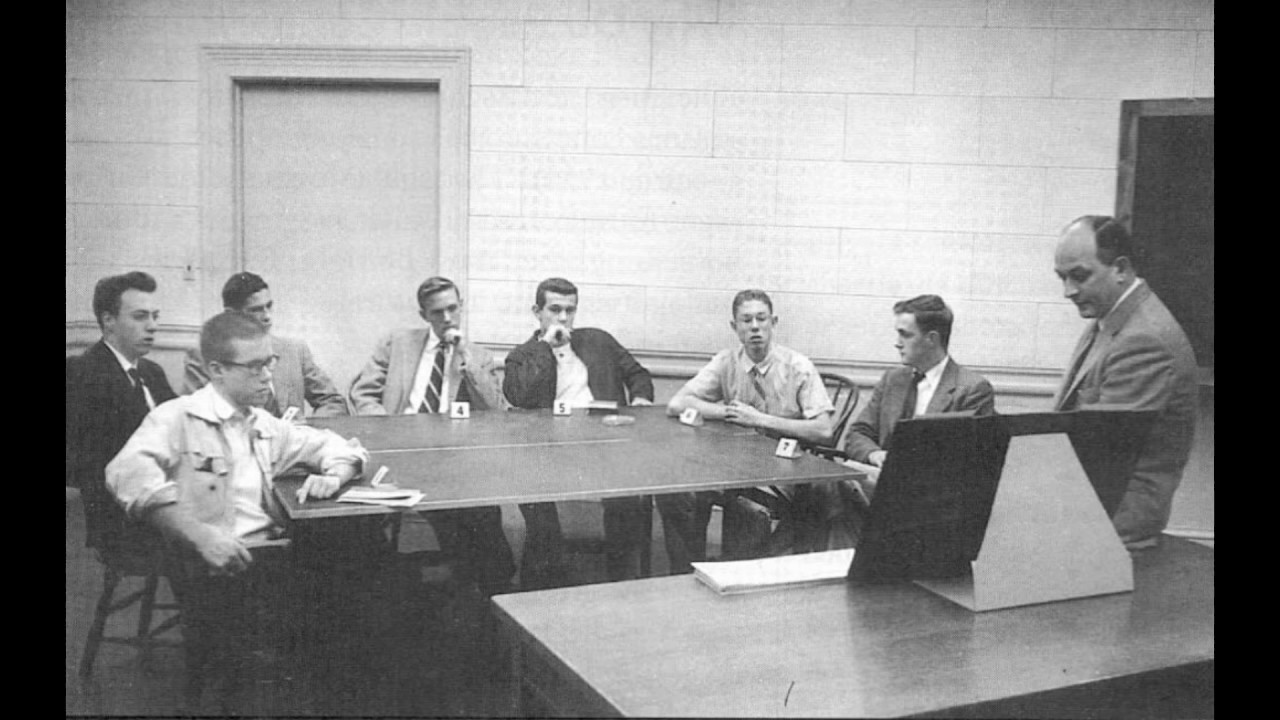The experiment conducted by Solomon Asch in the United States in the 1950s reveals that the individual adapts to them, even if incorrectly, in order not to be alone in front of crowds. So why are we doing this? Let’s take a closer look at what the Asch experiment is and see its purpose and results.
You sat in the cafe as a group of five friends. Everyone took turns asking for tea while ordering. When it was your turn, you wanted to drink lemonade, but you ordered tea to fit in with the group. What are you, a loser? No. It was first made in the 1950s and later repeated. According to the Asch experiment you’re just trying to fit in with the group, just like everyone else. Because everyone feels the need to be a suitable individual for the group.
The results of the Asch experiment show that the individual makes the right decision with them, even if it is wrong, to fit into the group. Of course, there are many different criticisms made about this experiment, but when we go down to the most basic level of the purpose of the experiment, a clear truth emerges that the individual adapts to the group. Bride Looking closely at what the Asch experiment is Let’s see the purpose and results of this experiment.
What is fitness as measured by the Asch test?
Fitness, also called psychological fitness, It shows the tendency of the individual to comply with the rules and behaviors of the social group he is in. Conformity does not simply refer to the general social norms of the culture to which the individual belongs; As in the Asch experiment, it refers to the state of adapting to the unspoken rules of the social group with which it stays together for a short time.
To what extent does the individual adapt to the norms of the social group to which he belongs, belongs or has to be in? Before and after the Asch experiment It has been repeatedly studied by scientists. In general, there is a belief that the individual is conformist, that is, that the group he is in is in compliance with the rules, even if it is not expressed.
What is the Asch experiment?
Let’s get to the topic of our article. Solomon Asch, an American psychologist, examined the conformity tests that had been done before him and found that they had some problems. Developing his own theory, he claimed that individuals would tend to conform to the general opinion of the group, even if it was wrong, rather than being in the minority in the group they were in. He conducted a series of experiments on this subject, and these were called the Asch experiments.
The Asch experiment comes to mind The first study was conducted by Solomon Asch in 1951 on 50 Swarthmore College students. In this experiment, groups of 8 people were asked which of the three lines next to a line resembled. 7 of the 8 people in the group were Asch’s assistants; one of them was an unaware participant. In the studies conducted, after 7 people responded, the participant was finally promised and the examinations were made on this.
What is the purpose of the Asch experiment, why was it done?
The experiment by Solomon Asch had a simple and single purpose; individual, being alone and despite being excluded Would he voice what he thought was right, or would he, knowing it be wrong, would he give them an appropriate answer just to fit in with the group he was in? Psychological fitness is the main subject of Asch experiments.
The results of the Asch experiment:

In the experiment conducted by Solomon Asch in 1951, there were 18 trials, of which 12 of them were selected as critical. In these critical trials, the 7 helpers in the group gave the wrong answer when asked which of the three lines next to a line resembled. The only participant in the group was in last place, and what mattered was how he would respond.
in the Asch experiment 32% of the participants, knowing that it was wrong, they responded appropriately by adapting to the group. While 75% of the participants in the 12 critical trials had adjusted to the group at least once, 25% had never adjusted to the group. In a different control group without Asch’s assistant, only 1% of the participants gave the wrong answer.
So why did the participants fit into the group so easily?

After the Asch experiment, interviews were held with the participants, and by talking about the real structure of the experiment, they wanted to adapt to the group, knowing why it was wrong. They were asked to give appropriate answers. The answers were divided into two; normative influence and informational influence.
Most of the participants knew that their answer was wrong, but because they are afraid of being teased or don’t want to look weird He said they gave this answer. According to this, the first reason was to be normal by adapting to the group, that is, the normative effect. The second reason was the belief that the group was more knowledgeable than they were, namely the informational effect.
The Asch experiment was repeated later and some key factors were determined:
- Availability depends on the number of people.
- Eligibility varies based on task difficulty.
- Eligibility varies according to the social status of the group.
- Eligibility changes based on specific response.
- Eligibility varies depending on the support the individual receives.
Availability depends on the number of people:
It was observed that the adaptation of the individual to the social group he belonged to changed according to the number of people. In order for the individual to be compatible, there must be at least 5 people in the group. Compliance is not always seen when the number is less. When the number of people in the group increases, more cohesiveness is not observed. However, when the number of people in the group increases and the wrong answer is revealed, the participant starts to get suspicious.
Eligibility varies by task difficulty:
It was clear which of the three lines next to a line in the first Asch experiment resembled one. Things got a little harder in the next experiments. and it was made obscure at a glance, so the task was now more difficult. In this case, the participant became much more adaptable, relying on the knowledge of the crowd. In obvious mistakes, it moved away from adapting.
Eligibility varies according to the social status of the group:
In the first experiment, both the participants and the helpers were students of the same age. In subsequent experiments assistants were selected from more powerful, influential and knowledgeable people. Even if these people gave the wrong answer, the participant agreed because they thought they were more knowledgeable than him. In other words, the social status of the group in which the individual belongs has a direct effect on eligibility.
Eligibility changes when custom response:
In another experiment, the same question was asked, but this time the participant was asked to give a specific answer, eligibility was reduced. That is, individuals do not adapt when there is no social pressure on them and when others do not know what they are doing.
Eligibility varies depending on the support an individual receives:
In a different experiment, most of the helpers gave the wrong answer, but one of them gave the correct answer in a planned way. When he gets support from even a single person the participant took the risk of facing a large part of the group by holding on to the right thought and did not adapt. In other words, even a small support can enable the individual to defend his/her own opinion.
Criticisms of the Asch experiment:

Many criticisms were made about the results of experiments conducted by Solomon Asch in the 1950s. Because at this time there was a witch hunt in the USA. Even those who were slightly leftist were declared communist agents and excommunicated from the society. Especially young students were trying not to attract anyone’s attention, to fit into society and not to get into trouble. Therefore, it is thought that the results of the Asch experiment conducted in this period are not generally accepted.
A similar experiment was conducted on this idea in the following years. In a similar experiment done in the 1980s, The number of people who fit into the group was negligible. Because the society has become more free now and the students are used to criticizing instead of keeping quiet. In other words, suitability also varies according to the conditions of the society in which the individual lives.
It shows that the individual makes decisions by adapting to the crowd. What is the Asch experiment We talked about the purpose and results of this experiment. What would be the results of such an experiment today? You can share your thoughts on the subject in the comments.
